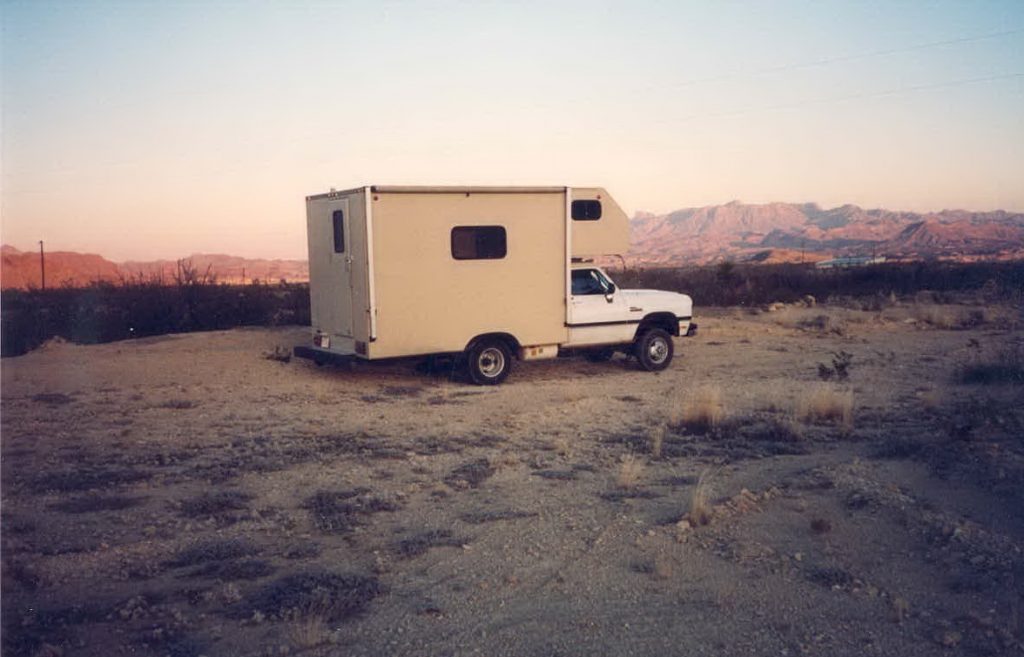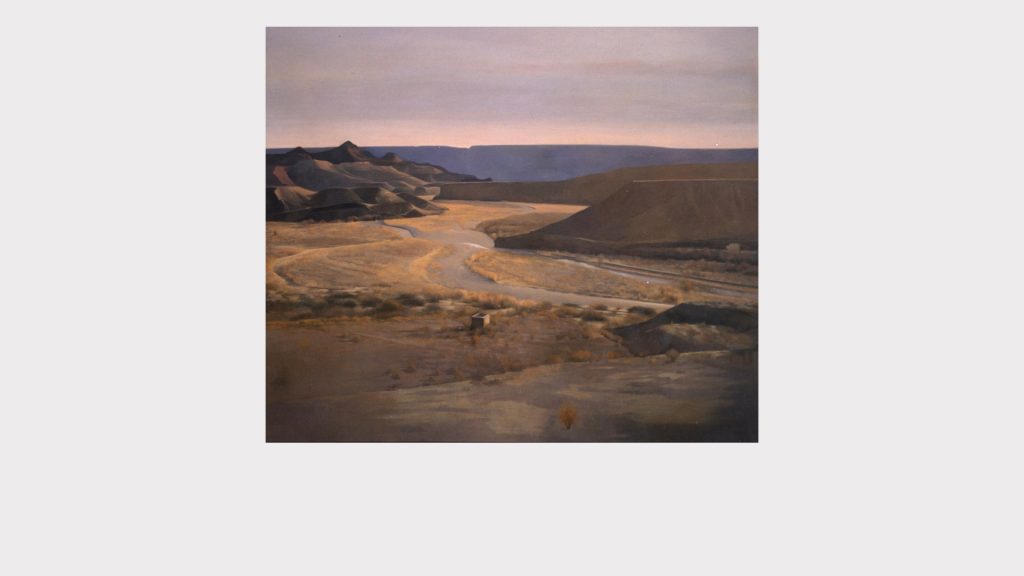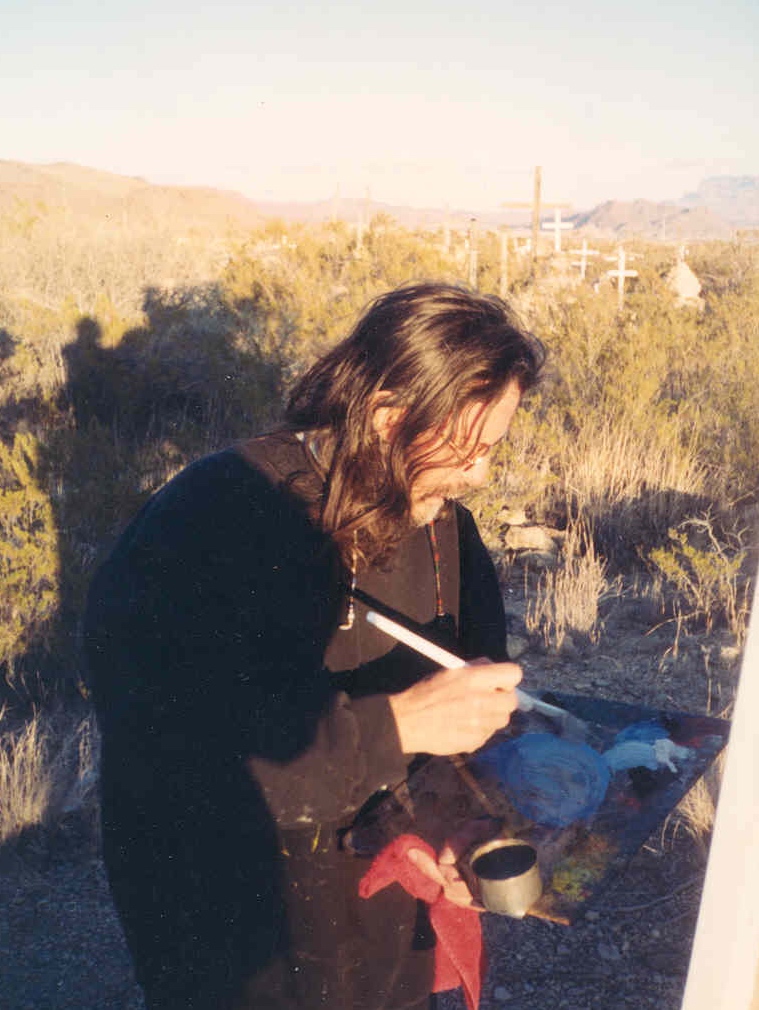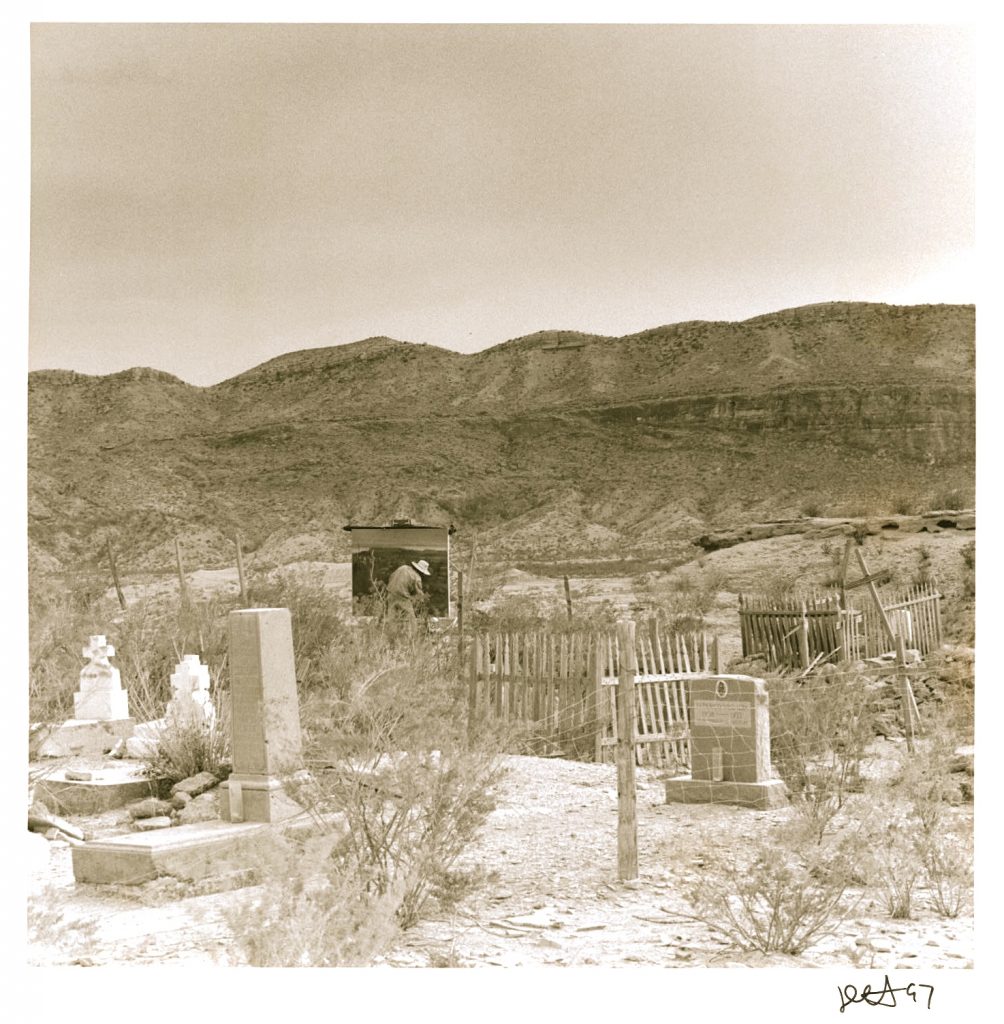How leaving New York drew us closer to art
I met Miguel in Manhattan at the beginning of the 90’S. He had lived there for ten years and led a busy city life. Gallery openings, meetings with collectors and constant committments would frequently interrupt his precios painting time in the studio, but then a new painting project started to brew. A series of landscapes painted from life, in the deserts of the american southwest. It was time for a change.
We said good bye to New York in December of 1993. As we drove away from the city, we felt the familiar rush of our previous life slowly give way to the comfortable, soft rythm of our future.

People sometimes ask me with great curiosity what did Miguel and I do all day, camping in the desert, far away from it all. The answer is that we were closer to what we cared about most, art.
Our days in the desert started at dawn. The cold, damp air of the morning seeping through the walls of our tiny camper. Gregorian chants and oatmeal for breakfast.
At 8am we were ready to start painting. We’d say good bye and enjoyed the silence of our walk to our painting site. The endless views of the desert landscape were a door to possibility. There was a perfect future painting anywere you looked.
Nature mixes colors in exact harmony. On a cloudy day you can see lines of golden light sharply cut through the dark blue and gray clouds. The earth seems browner, the cacti serious and the dry grass brush seems to glow with a light of its own.
On sunny mornings colors melt into each other in subtle tones of pinks and ochres, there is no contrast and the air is so transparent it disappears.

We never had a watch or payed attention to time. We followed the pace of the sun across the sky. When the sun was exactly above my head I knew it was time for a lunch break. I’d go back to the camper and make sandwiches. One of our favorites was mozzarella, tomatoes, red pepper and basil with a generous amount of spanish olive oil.
Miguel and I would regularly eat in front of his painting and discuss it. I felt important when asked for my opinion, which I shared gladly. Frowing his brow, he’d look at the painting and nod his head, really considering what I had said.
After lunch we’d still had several hours of light ahead which meant several more hours to paint. In the evenings we took long walks and ate around the fire. The day ended with a good book which I read out loud for us both to enjoy.
In those years we finished countless books, walked for endless miles and painted every single day
We traded the excitement of the city for the silent embrace of the desert.
Natasha Gray


